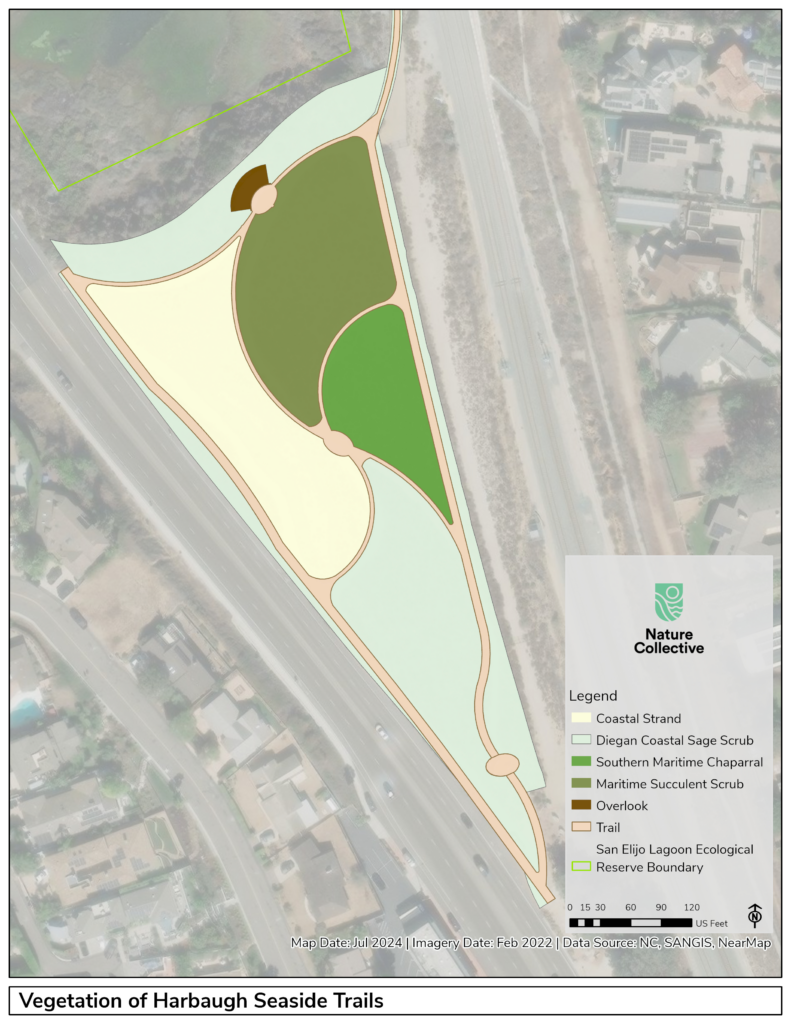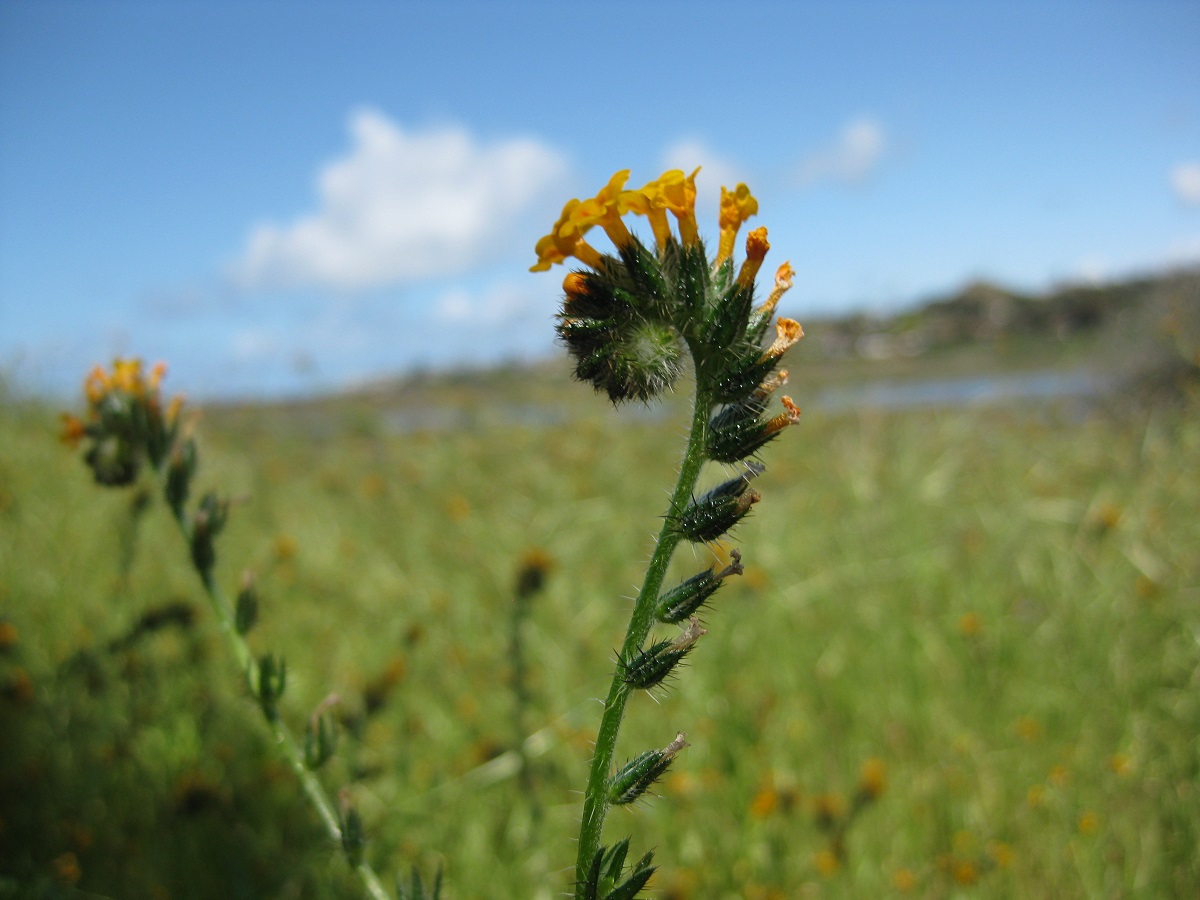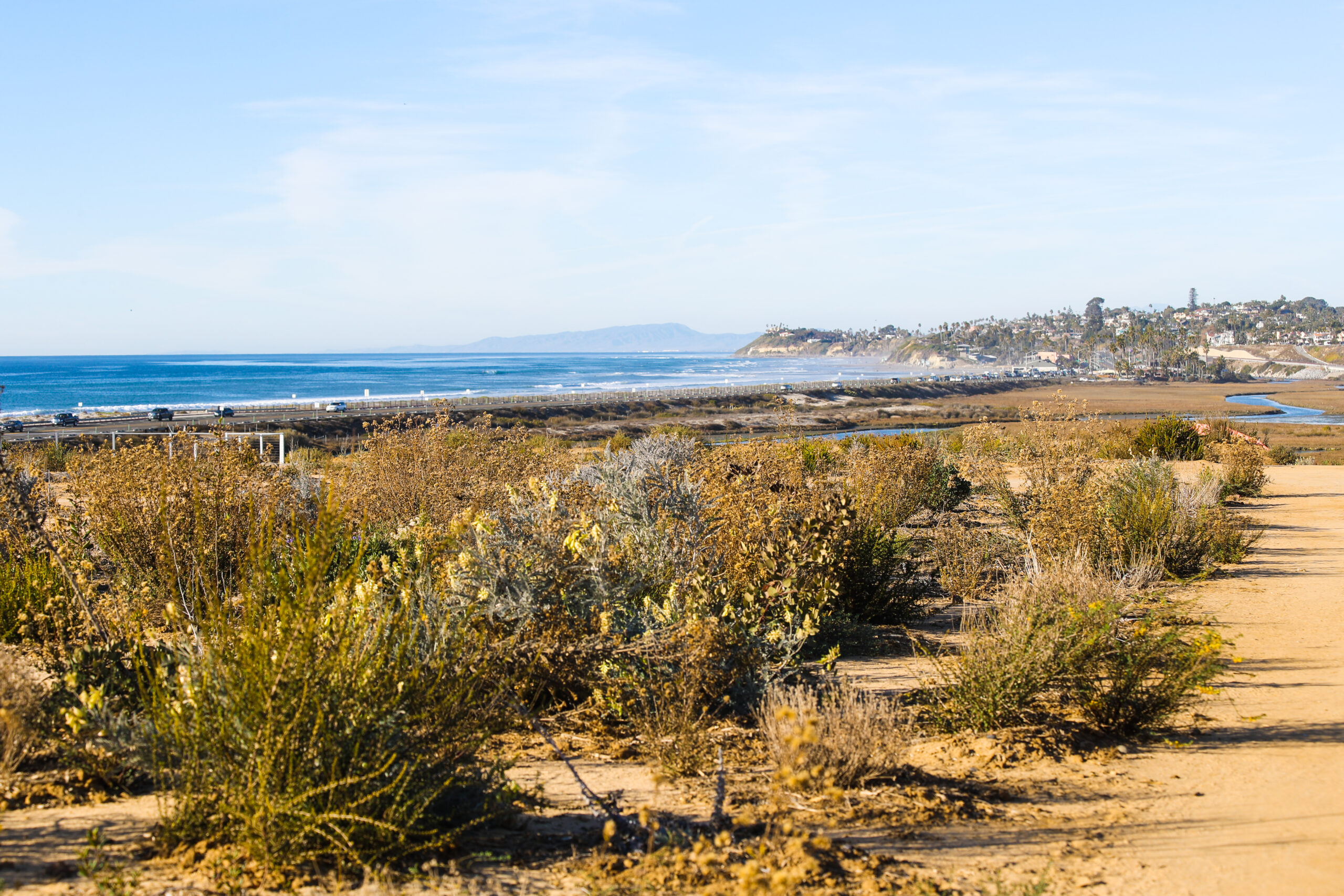Welcome to Harbaugh Seaside Trails. We invite you to explore four “primary” vegetation communities.
In 2022-23, Nature Collective undertook an extensive project to map the diverse plant species across a 1,205-acre territory, including the San Elijo Reserve and Harbaugh Seaside Trails. The study revealed 71 plants “alliances,” providing crucial planning and environmental adaptation data. We grouped alliances into larger entities using advanced mapping techniques, highlighting shared traits to aid conservation strategies. We invite you to explore four “primary vegetation communities,” including Southern Maritime Chaparral, Diegan Coastal Sage Scrub, Maritime Succulent Scrub, and Coastal Strand through QR codes along the trails. Experience the richness of biodiversity and join our mission to safeguard it.






